Jan. 4 update on COVID-19 in MN: Enough vaccine in state for health care workers at greatest risk
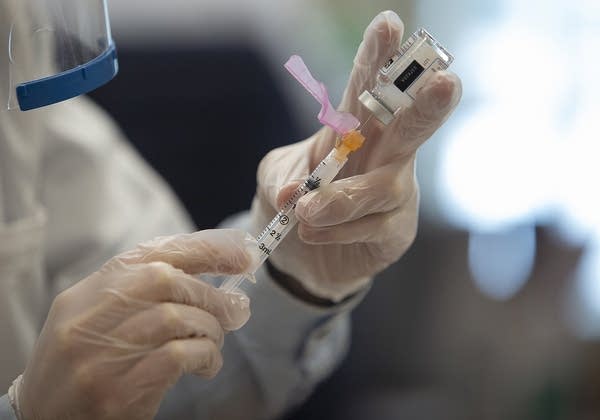
Go Deeper.
Create an account or log in to save stories.
Like this?
Thanks for liking this story! We have added it to a list of your favorite stories.
Updated: 5:52 p.m.
Minnesota health officials say the state expects to receive enough COVID-19 vaccine to inoculate all its health care workers and most nursing-home residents by the end of the month.
The state has administered 78,402 vaccinations as of Monday, less than 30 percent of the nearly 300,000 doses of Pfizer and Moderna vaccines allocated to the state by the federal government.
“The bottom line is the vaccine process — as very complicated as it is — is ramping up as quickly as can be done safely,” Health Commissioner Jan Malcolm said. “We do expect that pace will increase, as more vaccine doses are produced and shipped to providers all over the state.”
While enough vaccines are available for a first shot for health care workers designated for phase 1A, which covers health care professionals, long-term care residents and others most likely to encounter the coronavirus, the state’s infectious disease director Kris Ehresmann said it would take through the month of January to complete the first round.
Turn Up Your Support
MPR News helps you turn down the noise and build shared understanding. Turn up your support for this public resource and keep trusted journalism accessible to all.
“Once doses arrive at their final destination, hospitals are moving deliberately to make sure they get it right. The people giving the shots need to be trained, and the people getting the shots might need education about the vaccine to be comfortable putting it in to their bodies,” Ehresmann told reporters Monday.
Minnesota health officials on Monday reported 3,148 new cases of COVID-19 and 13 new deaths. But due to the holiday weekend, it may take some waiting to understand the direction the state is headed for the coronavirus pandemic.
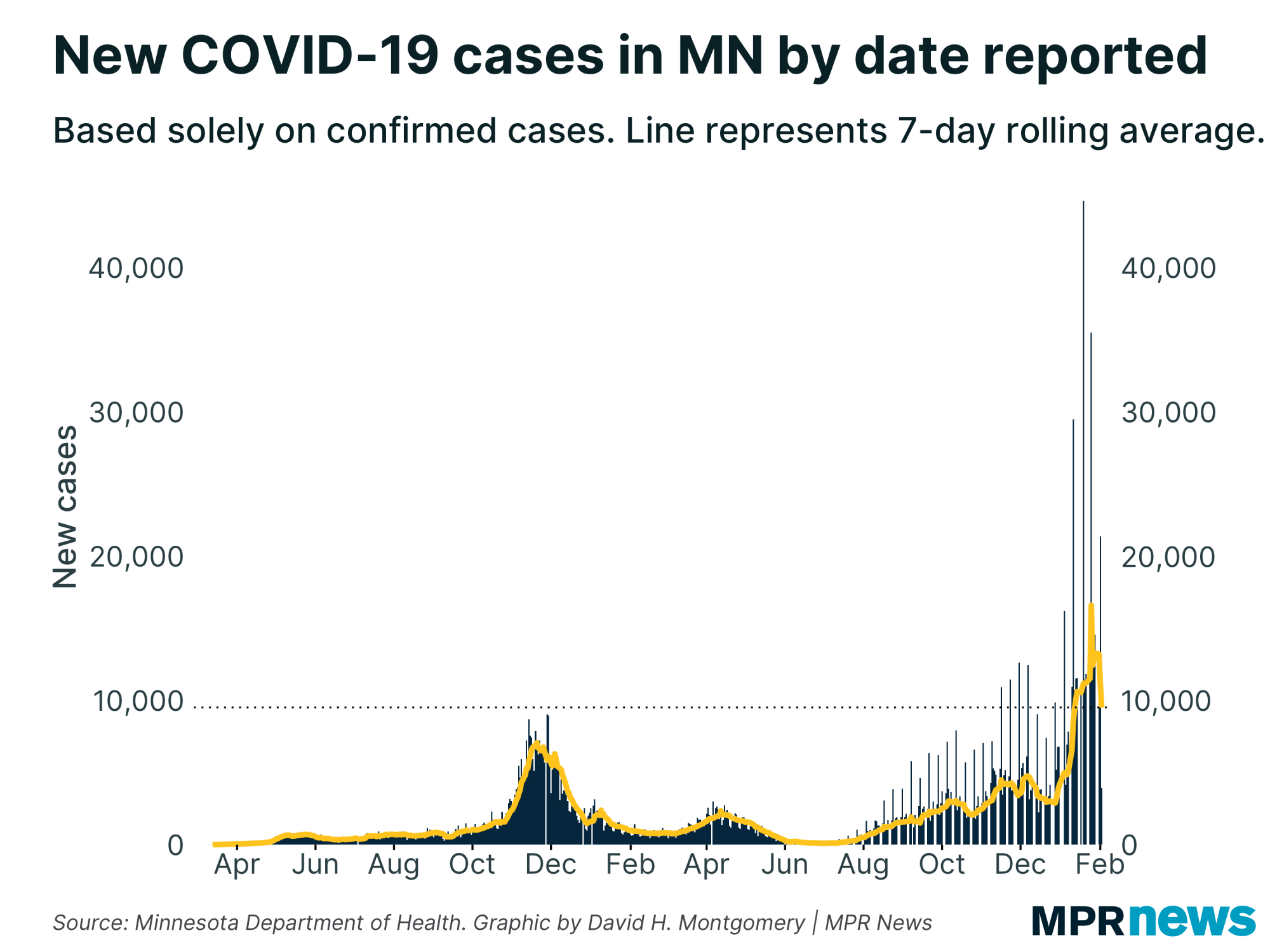
Waiting to see whether an uptick in daily case counts, test positivity rates and some other key metrics in recent days are a momentary blip in what have been weeks of declining numbers, or a sign of a changing trajectory in the pandemic.
Case numbers have been mostly stable, although Monday marks a notable upturn. That said, state data show unusual deviations in other areas, like the percent of positive tests. That’s often a sign of data anomalies that can be linked to holiday reporting schedules.
The Health Department also released data from old, backdated tests from November — a process that happens periodically due to labs belatedly submitting information to the state — but caused Monday’s positivity rate to be artificially inflated.
The 13 reported deaths reflects a typical downturn of deaths reported early in the workweek, although it is down significantly from the previous eight weeks.
New hospital admissions are down below 100 for only the third time in the last two months and new vaccination data now show nearly 80,000 Minnesotans have been inoculated so far.
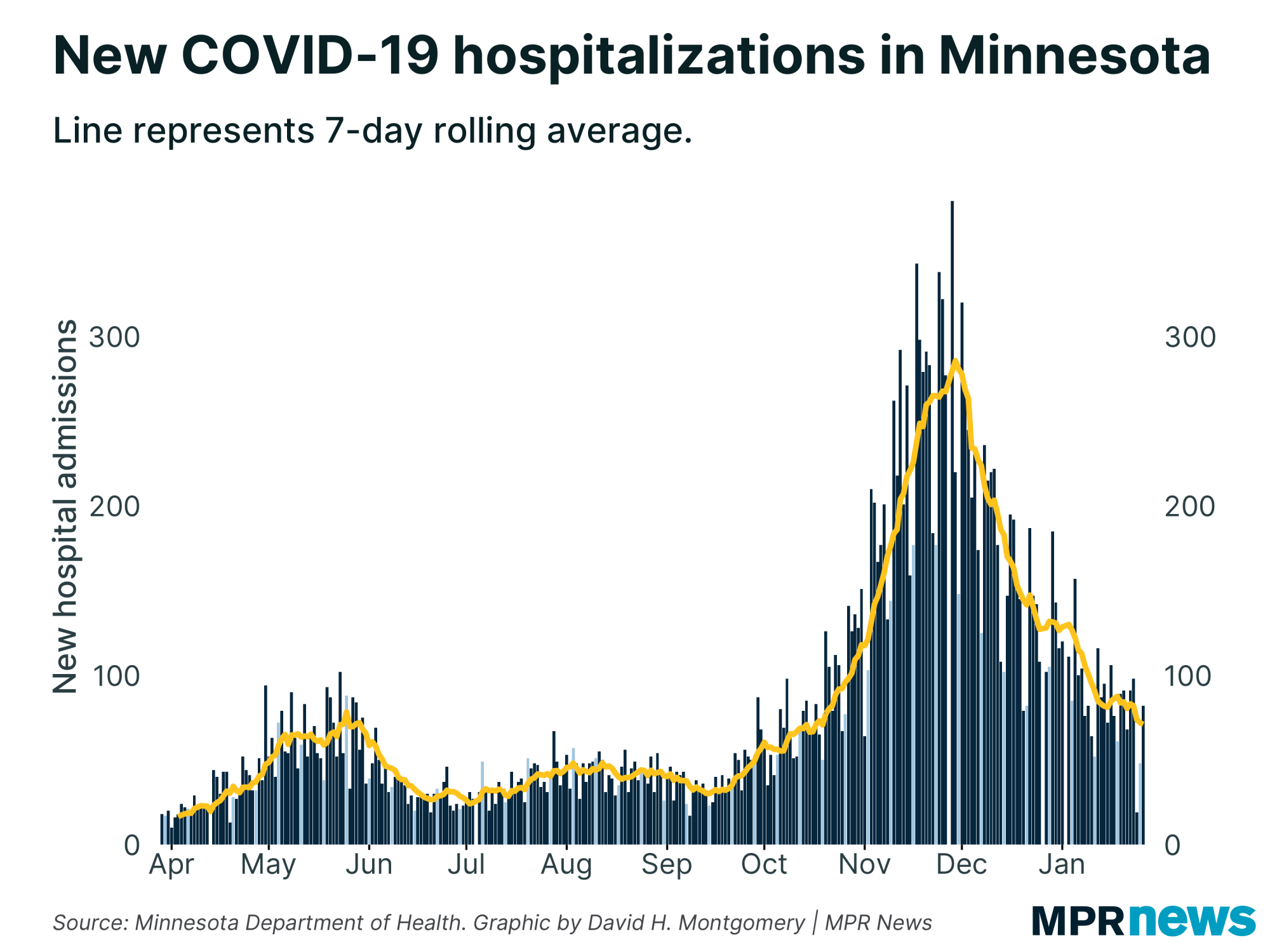
Walz to ease curbs on indoor dining
Minnesota’s current COVID-19 restrictions on bars, restaurants and entertainment venues are set to expire at the end of the day Sunday, Jan. 10. Gov. Tim Walz’s office said on Monday that the governor plans to announce a rollback of restrictions on indoor dining and other settings on Wednesday.
Since before Thanksgiving, Minnesota bars and restaurants haven’t been able to offer indoor table service. Bowling alleys, museums, movie theaters and other entertainment venues have been closed, too.
“Many of them are ready to put in mitigation efforts. But I think this idea that everybody is going to go back in maskless and pack these places, that’s not the way it’s going to look,” Walz said.
He said coronavirus test positivity rates are lower than they were when the restrictions were imposed, and hospitals aren’t under as much strain. Walz said he personally would feel comfortable eating at a restaurant once indoor table service resumes.
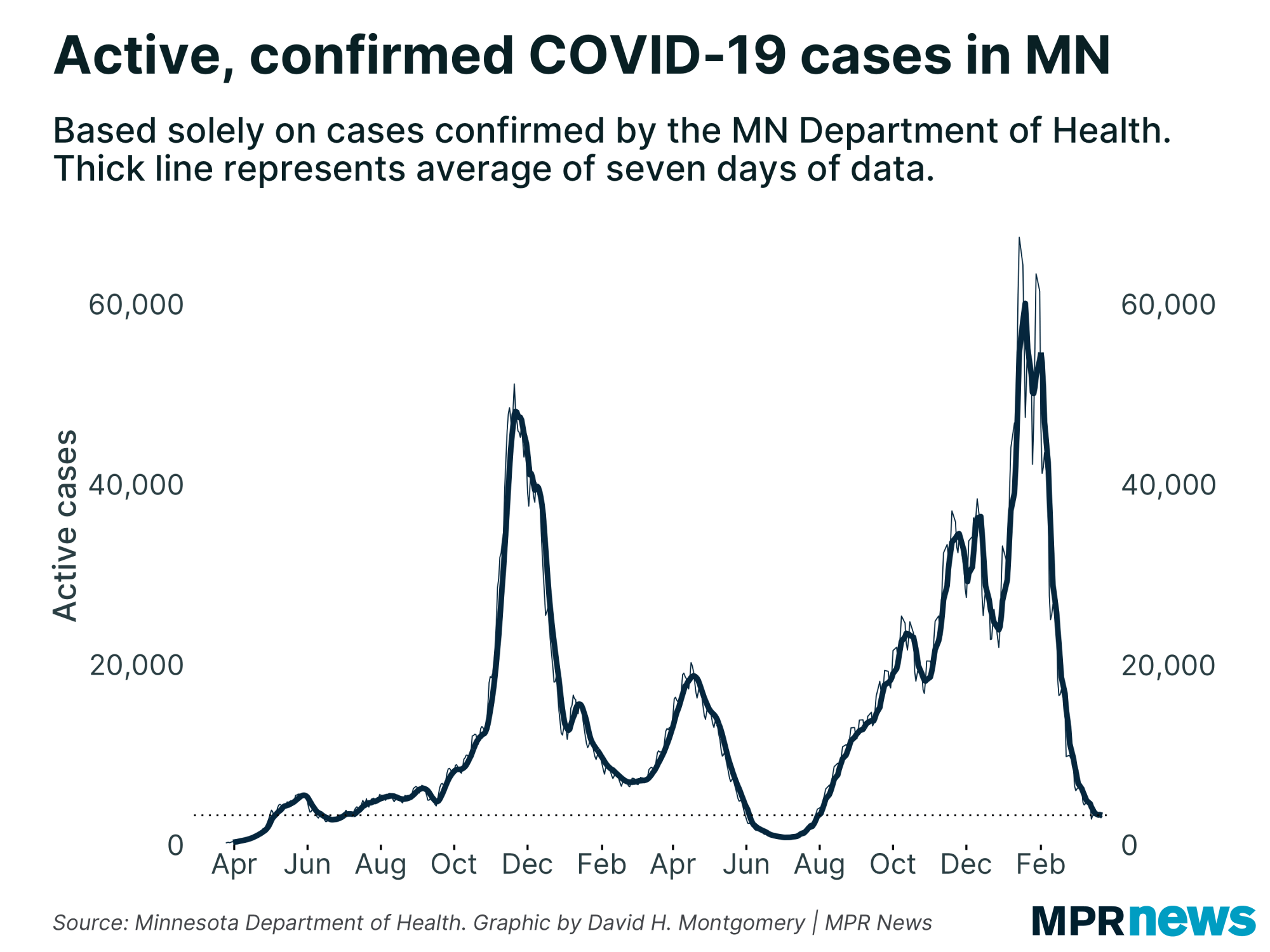
Caseloads spread across age groups
People in their 20s still make up the age bracket with the state’s largest number of confirmed cases — more than 80,000 since the pandemic began, including more than 42,000 among people ages 20 to 24.
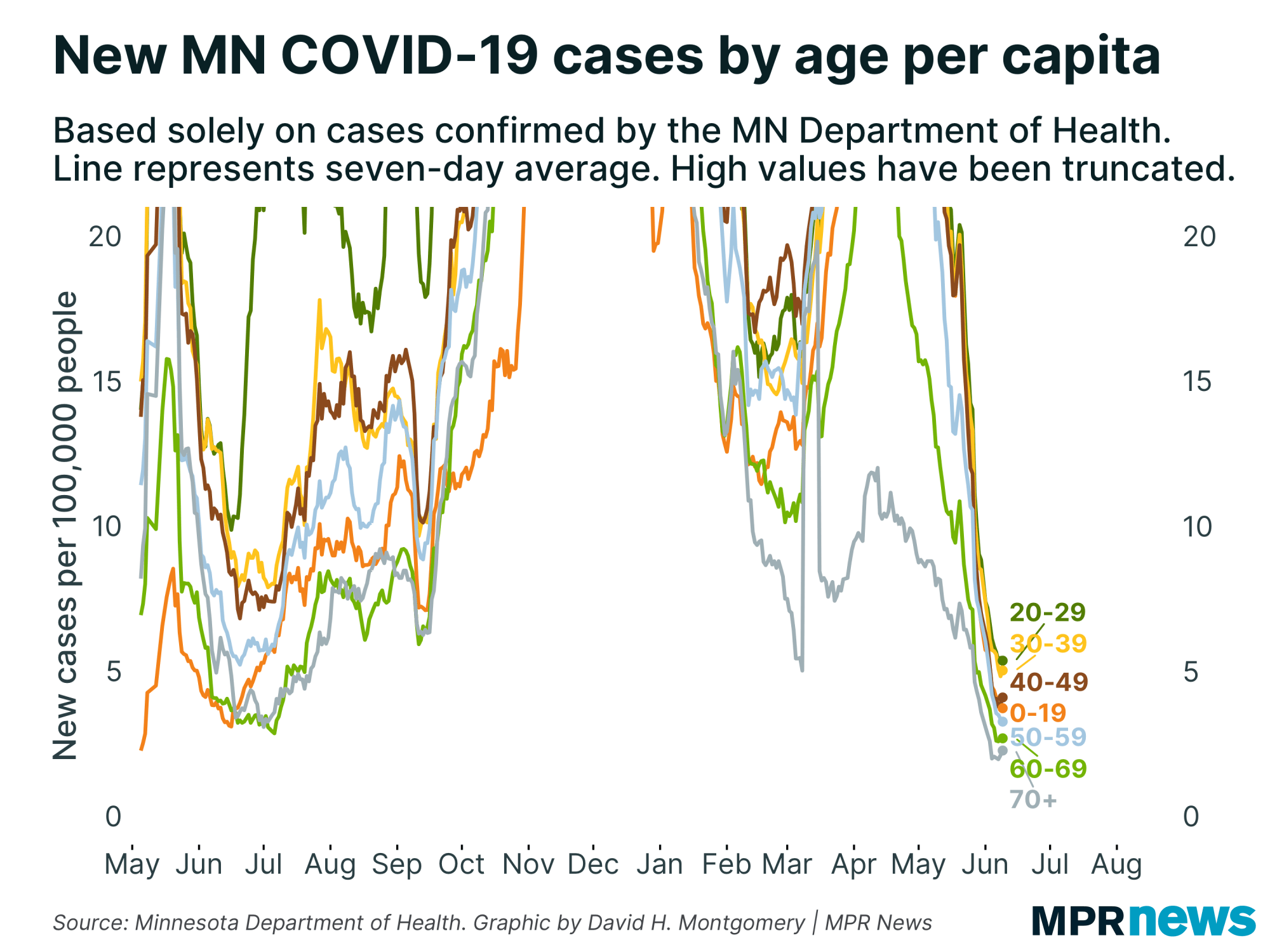
The number of high school-age youth confirmed with the disease has also grown, with more than 32,000 total cases among those ages 15 to 19 since the pandemic began.
Although less likely to feel the worst effects of the disease and end up hospitalized, experts worry youth and young adults will spread it to older relatives and members of other vulnerable populations.
It’s of particular concern because people can have the coronavirus and spread COVID-19 when they don’t have symptoms.
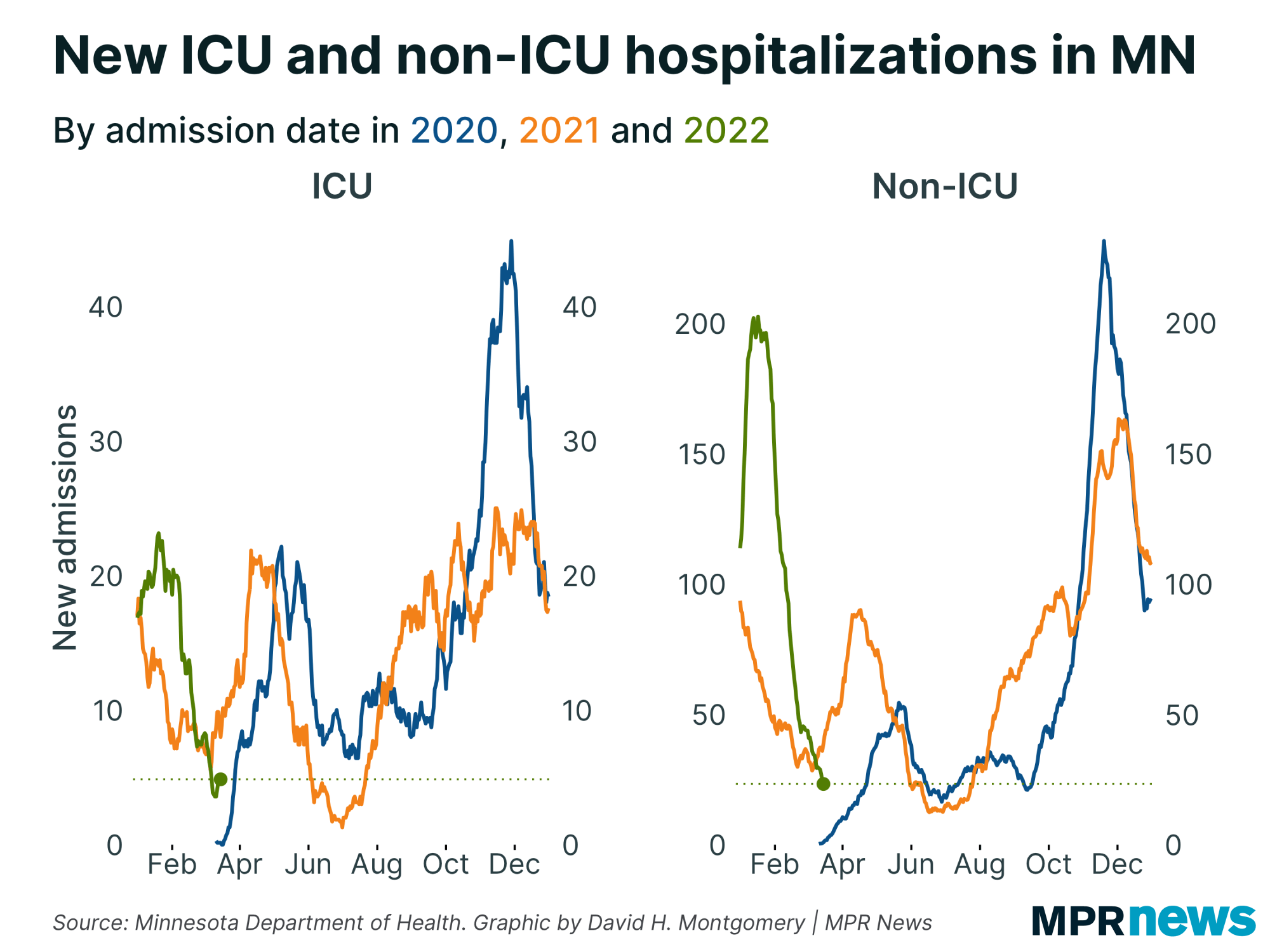
New cases ebb across Minnesota
Central and western Minnesota drove much of the increase in new cases over the past two months, while Hennepin and Ramsey counties showed some of the slowest case growth in the state.
Cases continue to fall statewide, with most regions dipping down to levels before the state’s COVID-19 surge that hit in November and early December.
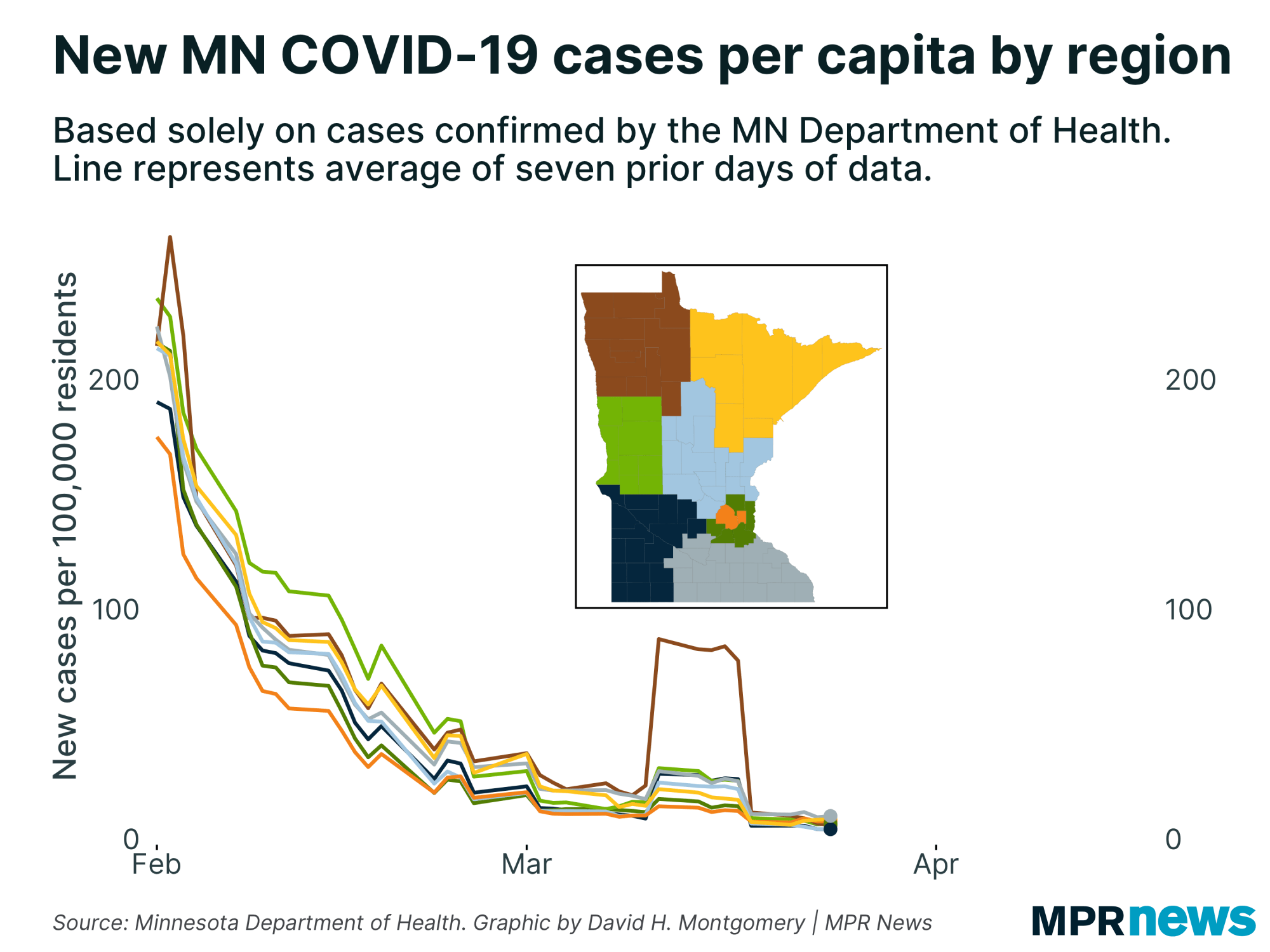
Hot spots continue to pop up in rural counties relative to their population.
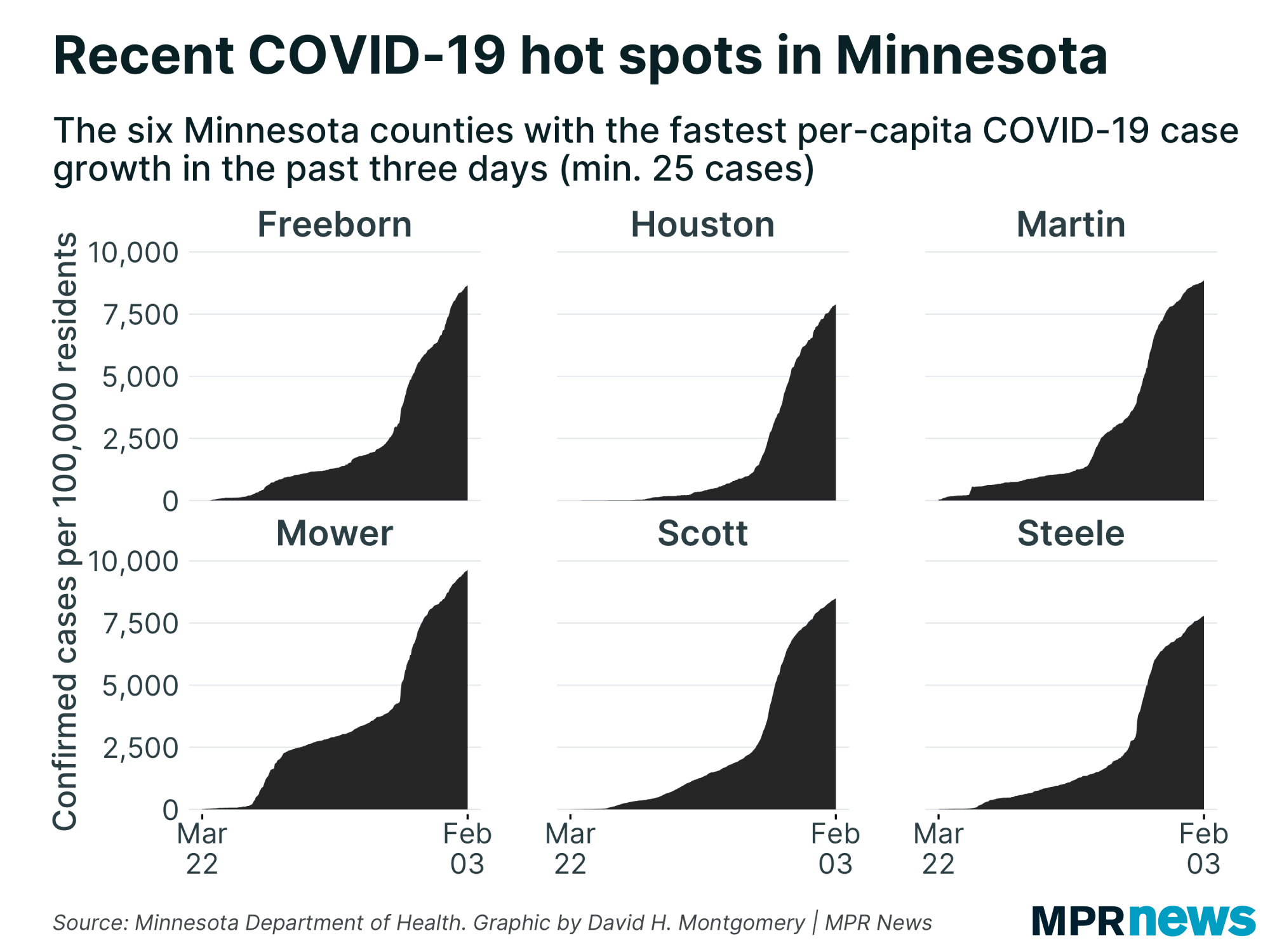
Caseloads still heaviest among people of color
In Minnesota and across the country, COVID-19 has hit communities of color disproportionately hard in both cases and deaths. That’s been especially true for Minnesotans of Hispanic descent for much of the pandemic.
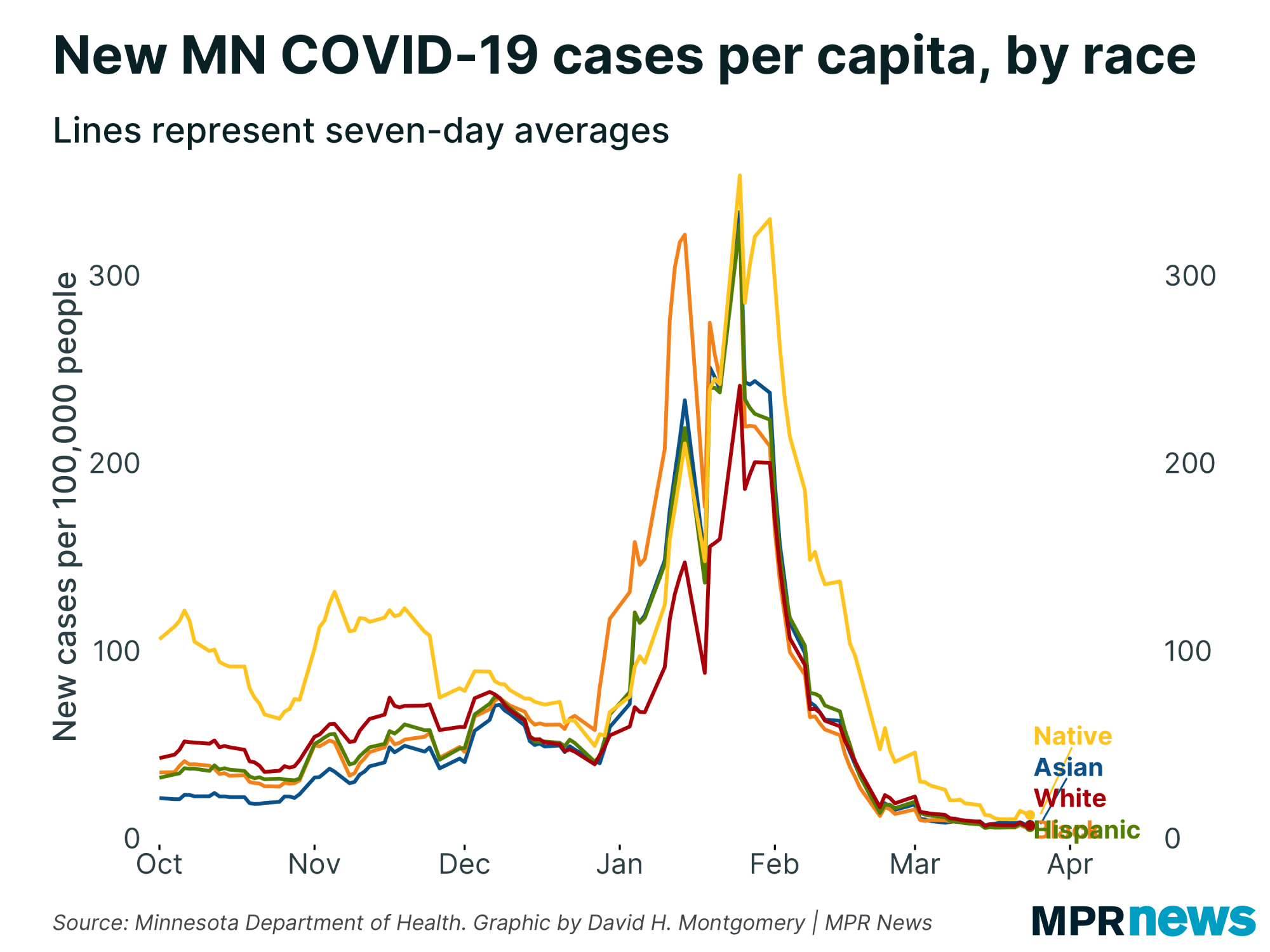
Even as new case counts ease from their peak a few weeks ago, the data shows people of color continue to be hit hardest.
Distrust of the government, together with deeply rooted health and economic disparities, have hampered efforts to boost testing among communities of color, officials say, especially among unauthorized immigrants who fear their personal information may be used to deport them.
Similar trends have been seen among Minnesota’s Indigenous residents. Counts among Indigenous people jumped in October relative to population.
Developments around the state
Man charged after allegedly pointing gun at manager at a Maplewood gym over mask dispute
A man was charged Monday with threatening a fitness club employee over the wearing of masks.
Ramsey County prosecutors say Michael Florhaug confronted the manager of an LA Fitness in Maplewood, Minn., last Thursday.
According to the criminal complaint, the 65-year-old Maplewood man said not enough people were wearing masks. A man working out saw Florhaug point a handgun at the manager before the manager tackled Florhaug and managed to disarm him when his back was turned, prosecutors said.
Florhaug said he just flashed the gun.
— Nancy Lebens | MPR News
Minnesota to ramp up vaccinations amid questions of pace
Minnesota officials are aiming to ramp up vaccination efforts as the pace to administer doses to health care workers and long-term care residents and staff moves slower than expected.
The Minnesota Department of Health reported on Monday that providers across the state have administered 78,402 doses of their nearly 300,000 doses of Pfizer and Moderna vaccines — less than 30 percent of the doses allocated to the state by the federal government.
Last week, state officials directed nearly $40 million from the state's COVID-19 fund to the Health Department to support vaccination strategy and response efforts statewide.
— The Associated Press
Youth sports practices resume in Minnesota
Youth athletes in Minnesota are preparing to return to gyms, ice rinks, pools and other venues on Monday.
Organized athletics have been halted since mid-November as part of the coronavirus restrictions imposed by Gov. Tim Walz.
While practices can now begin, winter-season competitions won’t be allowed until Jan. 14. In most sports, no spectators will be permitted and masks will be mandatory.
Farmington High School girls basketball coach Liz Carpentier said the athletes she coaches are excited to be back on the court. Last season her team advanced to a state championship game that was scrapped early in the COVID-19 pandemic.
“After last March, you know, all summer and all fall there’s been definitely the motto and the mood of ‘unfinished business.’ I think it’s fuel for them," she said.
Carpentier said players and coaches will adjust to the mask requirement and other new precautions.
“Just being mindful of the fact that, hey, they may need a bit more water, they may need more breaks here and there," she said. "That’s fine. But it’s not going to change the way we play. I’m not worried about that. We’re just going to look a little bit different when we hit the court.”
Group fitness classes at gyms are also allowed again, with some limitations.
— Brian Bakst | MPR News
Minnesota directs money toward vaccination effort
The Walz administration has directed about $40 million from a state COVID-19 fund to be used for vaccination deployment in Minnesota.
The allocation made in the final days of December will go toward the largest-scale vaccination push in state history. Millions of people will eventually be inoculated in the year ahead.
Documents from the Department of Health as well as Minnesota Management and Budget said the infusion of dollars is needed to create a vaccination infrastructure. Their preliminary estimates are that it will take at least $134 million to vaccinate all Minnesotans in a timely way.
The money will go for everything from planning and distribution to supplies, warehousing and community vaccination sites. A public awareness campaign is also in the works.
State dollars are being used because the timing and availability of federal money haven’t been made clear. Federal dollars are certain to flow to Minnesota to assist with the effort, or to assume costs that the state has incurred.
Minnesota has received federal reimbursement for a portion of its costs for setting up a temporary morgue related to the COVID-19 pandemic.
State budget documents show the Federal Emergency Management Agency has authorized about $4 million toward the cold storage facility in St. Paul that has yet to be used. The state purchased the warehouse for about $7 million to convert it for potential storage of human remains.
Gov. Tim Walz has taken heat for the expense, but he says he didn’t want bodies to wind up in freezer trucks as other states experienced when their death tolls mounted.
More than 5,400 deaths are attributed to COVID-19 in Minnesota, but funeral homes and local facilities have been able to accommodate remains so far.
— Brian Bakst | MPR News
COVID-19 in Minnesota
Data in these graphs are based on the Minnesota Department of Health's cumulative totals released at 11 a.m. daily. You can find more detailed statistics on COVID-19 at the Health Department website.


